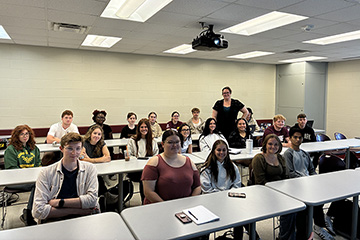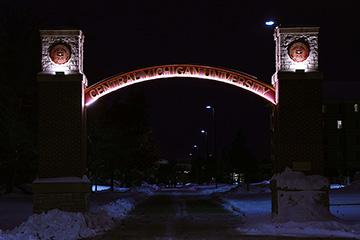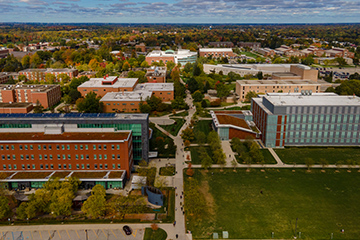Why do people believe that Halloween candy is poisoned?
Expert explains why Halloween candy myths endure
Highlights:
- The myth of stranger-poisoned Halloween treats started with the industrial production of candy.
- People believe the myth of stranger-poisoned Halloween candy for good evolutionary reasons.
- Other popular Halloween myths involve costumes and crime waves, and candy laced with drugs.
Americans were estimated to have spent more than $4 billion on candy in 2024 for Halloween trick-or-treating. Part of the holiday’s ritual are warnings to check candy to make sure it isn’t poisoned. The issue: poisoned candy is a myth. The only documented case of someone poisoning Halloween candy involved a parent and his child.
Joshua Smith is a faculty member in Central Michigan University’s Department of Philosophy, Anthropology & Religion. He shared his expertise on why people continue to believe myths about the safety of Halloween candy.
Q. Where does the myth of poisoned Halloween candy come from?
This myth has been around at least since industrial production of candy began. It tends to rear its head when there's some kind of social upheaval (satanic panic, desegregation, etc.)
Q. Why do people believe that Halloween candy is dangerous?

Part of the explanation for why people believe that candy is dangerous is that we're bad at thinking about risk. Risk concerns how likely some bad outcome is, and we're notoriously bad at reasoning with probabilities. So, we hear about one or two stories of something bad happening with Halloween candy and we conclude that Halloween candy is risky. We fail to take all our evidence into account and think that even if those stories are true (and they probably aren't), the likelihood of running into a situation like that is incredibly low.
There's good evolutionary reason for our being bad with probabilities – erring on the side of caution, even when the risk is very low, can be a good survival strategy (think about how deer run at the first sign of danger and thereby stay alive). But we're also capable of being rational, so we can learn how to handle probabilistic reasoning, yet many don't.
Interestingly, there's research that suggests that even when we're trained to reason well, we still fail on more often that you'd expect. Overcoming the shortcuts in thinking we're tempted to take is challenging and requires vigilance.
Q. Are there other Halloween-related safety myths?
Yes, there are and they involve similar mistakes in taking one's total evidence into account. Here are two.
Some people think that evil people will use Halloween as an excuse to dress up to commit crimes (consider people dressing in the Scream outfit or Clown costumes). Yet no one really expects to hear about a crime wave on Nov. 1. Holding both of those things at the same time is a serious tension.
Some folks think that people will substitute THC gummies for candy gummies. Again, this is problematic for anyone who knows even a little about THC gummies and the people who tend to enjoy them legally. They're expensive, so subbing them would be quite an expensive prank. Moreover, people who use them tend not to be interested in using them for purposes other than their own enjoyment or medical needs.
Q. Is there a relationship between these myths and trick-or-treating hours?
I don't think so. I think trick-or-treating hours tend to be driven by daylight hours and the safety of children as pedestrians. For drivers, seeing a child in costume after dark is much more challenging.
Q. Why do people believe things are more dangerous than they are?
One way to think about rational behavior is to think about weighing the value of some outcome against the likelihood of that outcome and compare those considerations for every possible action. In many cases, the rational course of action will involve avoiding potentially catastrophic outcomes, even if they're unlikely.
Consider skydiving, for example. For most of us, falling freely through the air sounds pretty cool, but having things go badly while skydiving sounds terrible. Other options of cool things to do don't have terrible possible outcomes. So even though skydiving is quite safe, the fact that things can go really badly weigh heavily in our calculations because we disvalue such an outcome greatly.
But we tend to be bad at assessing how likely or unlikely some outcome is. For instance, we often overlook a bunch of good evidence we have about how safe something is in favor of some meager, vivid evidence. We know that there are lots of flights in the air at any given moment, and yet many people who know this, when they hear about a plane crash, will be reluctant to fly for a while because they focus on that one data point rather than taking that into account with the rest of the information they have.
About Joshua Smith
Joshua Smith is a professor Central Michigan University’s Department of Philosophy, Anthropology & Religion. He received his doctorate from The Ohio State University.
His research interests include the theory of knowledge, especially what separates good reasoning from poor reasoning and how that relates to how we know things.




